Mother’s Day Memories
Posted on: May 7, 2013
7:00 am Sunday morning.
I awaken to the sounds of clanging, squealing, thudding, and shushing from the general area of the kitchen. I squeeze my eyes shut, hoping the sounds came from a dream. Open my eyes. Nope, the sounds are still there. Now add the aroma of burnt toast.
 Oh, that’s right…it’s Mother’s Day and I get breakfast in bed!
Oh, that’s right…it’s Mother’s Day and I get breakfast in bed!
Over the years it was interesting to watch how those breakfasts changed. As my boys grew, I was treated to a little more lavish and a little less charred.
Then came the year when I awoke to the voice of my college son, who lived in a dorm. Hmm, that didn’t make sense since he wasn’t visiting the night before and didn’t have a key. When he proudly carried in a gourmet breakfast tray, he informed me he had decided to surprise me and broke into a window during the night.
Surprise!!
Yes, it was a delicious meal. But I couldn’t help but wonder how much it was going to cost me. Between you & me, it was totally worth it!
There’s nothing more special than those Mother’s Day memories. Here’s to all the mothers who on this Mother’s Day Sunday morning will be eating breakfast in bed & smiling through their delicious burnt toast. Hopefully they’re not calculating the cost of a new window!
Back to School 3 R’s
Posted on: September 10, 2012
Ahh, it’s back to school time!
Does joy at the sound of the school bell make you feel like a mean mom? That alone should not do it.
But that, along with a plan based on the three R’s to take charge for a smooth transition, should. It takes a mean mom to get everyone back in the structured mode of the new school schedule.
Remember the three R’s of being a student? Well, now that you’re a mom of students, you have a whole new set of Three R’s to live by:
- Reality
- Responsibility
- Routine
The following interview explains these 3 R’s and how to use them to get everyone back into the groove of the school year:
Mom in Awe
Posted on: May 9, 2012
- In: compassionate | Kids | Parenting | responsibility
- Leave a Comment
 Since my mom passed away I have not been the same. Not just because I lost her, but because of what I learned about my two grown sons. I have been in awe of them ever since.
Since my mom passed away I have not been the same. Not just because I lost her, but because of what I learned about my two grown sons. I have been in awe of them ever since.
The first thing they each said when I told them of her aggressive cancer diagnosis was, “How soon can I go see her”, halfway across the country. Neither had the time or money and neither gave it a second thought.
They spent an entire weekend devoted to creating last memories with her, building a snowman in her front yard as she watched from inside with her oxygen and cane until she couldn’t contain herself anymore and ran out in socks to have a picture taken with them and the now famous snowman.
They baked Christmas cookies and threw pieces of dough at each other until she joined in laughing. When they had to say their final good-byes, both were incredibly strong.
I raised my boys as President of the Mean Mom’s Club, with a plan to teach responsibility and compassion. Sometimes they called me mean when I refused to give in to things that I knew were unsafe or against the family’s values. This experience taught me that I was successful beyond my highest goals for them. I am in awe of these compassionate young men who are my sons.
In a world where we continually hear about young people getting into trouble and being focused on just themselves, this is a story that needs to be shared.
How did they become responsible and compassionate rather than self-focused? I believe this is learned behavior and I believe that being a “mean mom” with a plan taught them that behavior. No, I don’t mean a mom who is a tyrant or who uses physical punishment. A true mean mom is one who knows from the beginning what kind of person she wants her child to become, creates a plan to get him/her there, and sticks to that plan all the way through, no matter what. That’s not easy to do. It’s exhausting, it’s frustrating, and heart breaking at times. But if you have a plan to follow, you can get through it. And when you find yourself looking at such amazing young people as my sons, every hour of lost sleep, every tear, and every gray hair was worth it.
If your goal is to raise kids to be responsible, compassionate adults, you need to plan how you will teach that throughout each stage of their development. As kids grow physically, they also grow emotionally and cognitively. That means they focus on different things in different stages and can only understand certain things at those stages. That means teaching new behaviors and values as they grow.
- Infants need to feel their needs will be met and that they have a positive social connection.
- Toddlers need to learn to explore their world and realize others share that world.
- Keep him safe when his emotions are out of control and keep your own emotions in check to help balance and calm him.
- Preschoolers need to learn to include others in their world.
- School age kids need to learn to socialize with different types of people and accept their differences.
- Teenagers need to learn that other’s needs sometimes come before theirs.
- Assign responsibilities to younger siblings such as helping with homework.
- Get them involved in some type of volunteer experience.
- If old enough, find a part time job, even for a few hours per week.
- Meet his needs when he expresses them. Making a baby wait teaches only that his needs will not be met.
- Talk to your baby and keep her in your presence when awake, in a walker, swing, etc.
- Allow independence but stay close while she explores and learns to be around others.
- Arrange social experiences, especially if not in pre-school.
- Focus on the cause and effect of the situation (when you do this, this is what happens).
- Use logical explanations that include actions and consequences.
- Involve them in team or group activities.
As you watch your kids grow through each stage, create opportunities to teach them to be responsible and compassionate within their understanding and focus. Plan ahead for what you can provide that matches your family’s values. You will be in awe of the result!
Most Memorable Family Easters
Posted on: April 6, 2012
Over the years Easter has brought many family memories.
Looking back, here are some of my most memorable ones. What are yours?
-
Beautiful colors of dye on eggs…and on the table, floor, clothes, faces, and tablecloth I was sure I removed before putting that newspaper down
-
Making the egg hunt with 2 dozen eggs go on for hours because eggs kept disappearing from baskets (after a certain age, this no longer works)
-
Dressing up for church; they’re so cute when they’re clean
-
The smell & taste of delicious ham dinner with all our favorites (topped off with the ears of the chocolate Easter Bunny)
-
Spending the day in the park with friends & family (best in the years it didn’t rain)
-
Listening to a choir of candy eggs roll down the wooden floor of church all the way to the pulpit & trying to pretend they didn’t come from my 2 year old
-
Setting a good example by talking to the minister after service, only to have my 8 year old announce, “That was the boringest sermon I ever heard!”
-
Finding chocolate eggs in pants pockets, 3 days after Easter
-
Making egg salad sandwiches for the next week, sneaking eggs that can’t be used because they’re the prettiest
I didn’t say they were all happy memories!
It Was For His Own Good
Posted on: February 9, 2012
- In: abuse | child abuse | law
- 1 Comment
 By now we’ve all heard the story of the Asian father who forced his 4 year old son to run unclothed down a snowy street, shivering and crying. The video went viral soon after it was shared. The reactions were rapid and varied. Lots of discussion was offered as to whether this constitutes abusive behavior. A few commenters were conflicted: “His father is cruel, but what he did is for the boy’s good. He won’t be like today’s children who are only able to play with cell phones and computers,” writes a viewer. Others only admonished the parents if they forced this kind of exposure on their child regularly. Excuse me, where is the connection between forcing your kid to run through bitter cold snow and playing with cell phones and computers? And what is “regularly”? It’s ok to expose your kid to hyperthermia for what, maybe 2 times? 5 times? If this person was told to do the same, how many times would they say is an ok level of exposure?
By now we’ve all heard the story of the Asian father who forced his 4 year old son to run unclothed down a snowy street, shivering and crying. The video went viral soon after it was shared. The reactions were rapid and varied. Lots of discussion was offered as to whether this constitutes abusive behavior. A few commenters were conflicted: “His father is cruel, but what he did is for the boy’s good. He won’t be like today’s children who are only able to play with cell phones and computers,” writes a viewer. Others only admonished the parents if they forced this kind of exposure on their child regularly. Excuse me, where is the connection between forcing your kid to run through bitter cold snow and playing with cell phones and computers? And what is “regularly”? It’s ok to expose your kid to hyperthermia for what, maybe 2 times? 5 times? If this person was told to do the same, how many times would they say is an ok level of exposure?
Obviously, we don’t understand what constitutes abusive behavior! That is amazing to me when so many well-known resources define it. I’m also amazed at the discussion of whether we should judge a family from another culture. Seriously?? It’s ok to abuse your child, based on our definitions, if you’re from another country and your laws are different? Does no one remember the case of the American teenager who was publicly caned in Singapore?
First, let’seducate everyone as to what constitutes child abuse in the U.S.
According to public law, child abuse has been defined as an act, or failure to act, on the part of a parent or caretaker that results in the death, serious physical or emotional harm, sexual abuse, or exploitation of a child, or which places the child in an imminent risk of serious harm (42 U.S.C.A. § 5106g). Or which places the child in an imminent risk of serious harm.
 The Centers for Disease Control and Prevention (CDC) and the Department of Children And Families (DCF) define child maltreatment as any act or series of acts of commission or omission by a parent or other caregiver that results in harm, potential for harm, or threat of harm to a child. Child abuse can occur in a child’s home, or in the organizations, schools or communities the child interacts with. Acts of commission are deliberate and intentional; however, harm to a child may or may not be the intended consequence. An act that results in harm, potential for harm, or threat of harm. Harm may or may not be the intended consequence.
The Centers for Disease Control and Prevention (CDC) and the Department of Children And Families (DCF) define child maltreatment as any act or series of acts of commission or omission by a parent or other caregiver that results in harm, potential for harm, or threat of harm to a child. Child abuse can occur in a child’s home, or in the organizations, schools or communities the child interacts with. Acts of commission are deliberate and intentional; however, harm to a child may or may not be the intended consequence. An act that results in harm, potential for harm, or threat of harm. Harm may or may not be the intended consequence.
![]() The International Child Abuse Network (Yes ICAN) takes their definition of child abuse and neglect from both the Child Abuse Prevention and Treatment Act (CAPTA), Public Law 104-235), as it has been amended and reauthorized in March 2003, and as amended by the Keeping Children and Families Safe Act of 2003 and the Report of the Consultation on Child Abuse Prevention, World Health Organization, Social Change and Mental Health, Violence and Injury Prevention. March 1999. Simply stated, Child abuse is the bad treatment of a child under the age of 18 by a parent, caretaker, someone living in their home or someone who works with or around children. Abuse of a child is anything that causes injury or puts the child in danger of physical injury. Child abuse can be physical (such as burns or broken bones), sexual (such as touching of private parts or incest), or emotional (such as belittling or calling the child names). Child abuse is any action (or lack of) which endangers or impairs a child’s physical, mental or emotional health and development. Abuse of a child is anything that causes injury or puts the child in danger of physical injury.
The International Child Abuse Network (Yes ICAN) takes their definition of child abuse and neglect from both the Child Abuse Prevention and Treatment Act (CAPTA), Public Law 104-235), as it has been amended and reauthorized in March 2003, and as amended by the Keeping Children and Families Safe Act of 2003 and the Report of the Consultation on Child Abuse Prevention, World Health Organization, Social Change and Mental Health, Violence and Injury Prevention. March 1999. Simply stated, Child abuse is the bad treatment of a child under the age of 18 by a parent, caretaker, someone living in their home or someone who works with or around children. Abuse of a child is anything that causes injury or puts the child in danger of physical injury. Child abuse can be physical (such as burns or broken bones), sexual (such as touching of private parts or incest), or emotional (such as belittling or calling the child names). Child abuse is any action (or lack of) which endangers or impairs a child’s physical, mental or emotional health and development. Abuse of a child is anything that causes injury or puts the child in danger of physical injury.
Do you see the common thread among these definitions? Any act that causes or potentially causes the harm of a child constitutes abuse. The act does not have to be intentional. The parent does not have to consciously intend to be malicious in  order to abuse a child. How many children have been abused by parents who were mentally ill and were, in their minds, trying to protect their children…as they drowned them in a bathtub? How many parents, when questioned about abusive actions, have stated, “It was for his own good.” In fact, this father made that statement when asked why he would subject his young son to the bitter cold. Apparently, it was to help build his immunities. Really? I used to contend that too much disinfectant was not good, that a little dirt never hurt a kid, builds immunities. But did I tell my kids to EAT dirt? NO! That would have been ABUSIVE!
order to abuse a child. How many children have been abused by parents who were mentally ill and were, in their minds, trying to protect their children…as they drowned them in a bathtub? How many parents, when questioned about abusive actions, have stated, “It was for his own good.” In fact, this father made that statement when asked why he would subject his young son to the bitter cold. Apparently, it was to help build his immunities. Really? I used to contend that too much disinfectant was not good, that a little dirt never hurt a kid, builds immunities. But did I tell my kids to EAT dirt? NO! That would have been ABUSIVE!
So, now, if you take this information and apply it to the video of the 4 year old running nearly naked through bitter cold and snow, do you still have to discuss whether it was abuse? And I don’t care where the family is from. You follow the laws of the country you’re in, as we’ve seen when our young people have gotten themselves thrown into jails in foreign countries or, as in the previous example, publically caned.
 We should never be reluctant to call attention to abuse and stop it. I once grabbed a mother’s arm as she swung back to strike her 8 year old child in the face. Yes, she was angry with me. But she did not strike her child. And yes, she was from a different culture. I didn’t care.
We should never be reluctant to call attention to abuse and stop it. I once grabbed a mother’s arm as she swung back to strike her 8 year old child in the face. Yes, she was angry with me. But she did not strike her child. And yes, she was from a different culture. I didn’t care.
- In: mommy tattoos | tattoos
- 1 Comment
According to Joanna Douglas, Senior Fashion and Beauty Editor | Fashion, the latest trend is moms tattooing their bodies in honor of their children.
Celebrity moms, including Angelina Jolie and Julia Roberts are displaying tattoos of motherhood.
And of course if the celebrities are doing it, the rest of us should too.
So, what tattoo would you display to represent your motherhood?
I’d have to say that I might need several tattoos to represent what I feel as a mother on any given day, or in any given moment.
 – to show how proud I am
– to show how proud I am
 – to display how much fun motherhood is
– to display how much fun motherhood is
 – to represent that side of me that sometimes says, “What were you thinking??”
– to represent that side of me that sometimes says, “What were you thinking??”
Then I think about what tattoos my kids might get to display how they feel about growing up with me as their mom.
And that’s when I want to launch a protest against all mommy tattoos for mothers and kids!
Breastfeeding Controversy – Why?
Posted on: January 12, 2012
- In: abc news | breastfeeding | Kids | Perfect mom | Support
- Leave a Comment
These are disturbing things I’m seeing in the news lately:
• A judge removed a breastfeeding woman from his courtroom
• Facebook deleted thousands of photos of breastfeeding mothers
• Stores have thrown mothers out for breastfeeding
Why? Why is this being allowed? There is no law that prohibits public breastfeeding. None. In one case the police who removed a mother from a store even admitted it was not against the law, as he was removing her; and she went!
T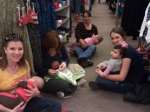 his is what I don’t understand. Why are moms not refusing to go?
his is what I don’t understand. Why are moms not refusing to go?
Moms did rebel and make a point to Target by staging a “sit-in” so to speak to publicize the issue. That was positive.
But why did the mom leave in the first place? There was no need for her to interrupt meal time for her infant.
I f people have a problem with breastfeeding, it’s THEIR problem.
f people have a problem with breastfeeding, it’s THEIR problem.
A man named Steve, at The Huffington Post commented, “This does not belong on TV or in public, it is gross.”
Excuse me?? It’s GROSS?? How is the act of feeding your hungry child gross? I say to Steve, “Grow up!”
Sesame Street has been able to handle the “grossness” of breastfeeding in the past as the natural healthy function that it is. But now, Sesame Street is under the gun by the Steves of the world not to teach kids about the most nutritious way to feed their new siblings.
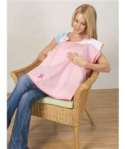 So, what should we tell little Johnny about why the new baby is hiding under a blanket in mommy’s arms, that she’s playing hide n seek? Give me a break!
So, what should we tell little Johnny about why the new baby is hiding under a blanket in mommy’s arms, that she’s playing hide n seek? Give me a break!
It’s the Steves of the world, with their neurotic hang-ups, that are dictating policy not to allow public breastfeeding. But it’s also the Steves of the world who are perfectly ok with displaying a naked woman on a magazine cover, with her arms covering only the tiniest of areas, in the front of a 7/11 store rack. Another mom and I went to that store & demanded that the manager put the magazine in the back so our 14 yr old sons didn’t see it when they came in for slurpies. The manager looked at us as if we were nutsy moms & placated us to get us out of his face. That same manager would be “grossed out” I’m sure by a mom coming in with her infant totally covered & breastfeeding. Why are we ok with that??
Come on, moms. Next time someone gives you a dirty look as you’re feeding your baby, smile sweetly & turn away. Next time a store employee asks you to go somewhere else, kindly decline their suggestion & turn away. Support Sesame Street in teaching breastfeeding by telling them you agree.
Do not let the Steves of the world & their immature hang-ups dictate policy because they’re grossed out!
- In: arrest | battery | Discipline | Kids | school | teaching
- Leave a Comment
A Stockton student was handcuffed with zip ties on his hands and feet, forced to go to the hospital for a psychiatric evaluation and was charged with battery on a police officer.
That student was 5 years old.
http://www.kcra.com/news/29847063/detail.html
This had to be the biggest 5 year old ever, or the smallest policeman ever! How is it possible that a 5 year old requires not only handcuffs (behind his back) but ankle cuffs to be controlled? Let me guess, the policeman left his taser at home that day.
As a “mean mom”, I believe in logical consequences for out of control behavior. But I’m trying hard to understand how the logical consequence of this behavior is to hogtie and throw the kid in the back of a squad car! Was this supposed to teach him something useful? Was this supposed to help him learn to control his behavior?
As a teacher working with challenging kids, my students had a variety of individual issues.
Donny, 6, was emotionally disturbed and occasionally would suddenly throw his books onto the floor & grab at anything within his reach to throw as well. I managed to keep him and his fellow students safe without ever handcuffing him! He required a firm physical restraint in the form of a hug from behind and a quiet voice in his ear until he could calm down. This never took more than a few minutes. Other students did not lose valuable learning time.
Bobby, 9, had occasional outbursts but required a different strategy. This was a student who had been severely abused by his mother. He required a man to soothe him with a calm voice. He could not tolerate being touched at these times and we were able to calm him without cuffs!
In my opinion this school had no understanding of the needs of their student and no plan in place to address a possible outburst. And clearly, this policeman has no clue how to deal with a child and should never be allowed near one! Please tell me he doesn’t have any kids!
So my questions are;
what is being done to punish the officer who man-handled a 5 year old child and what is being done by the school to finally address this student’s educational needs? Note, in the link to the original article, his mother has repeatedly asked for interventional strategies. This is what they came up with? So, is this officer on call to come charging into the classroom wielding his cuffs? Oh yes, the judge did drop the charges. Good move!
You find your child sobbing by the fireplace hung with Christmas stockings & you run to comfort him, thinking he’s afraid he wasn’t a good boy this year so Santa is going to put coal in his stocking (or bring him only socks and underwear, my favorite threat).
Gently, you tell him you’re sure Santa will bring him something he hopes for, anticipating his angelic smile.
Instead he looks up at you with sadness & accusation in his little face and says,
Joey told me there’s NO Santa Claus! Is it true?
There it is, the dreaded question you’ve been hoping to put off for years yet. So, now what? Do you tell him Joey is right? Do you tell him Joey is a little bully who made it up to hurt him? If you tell him Joey is wrong, are you lying to your child?
Families who believe in Santa go to great lengths
to protect that belief. As our children approach the questioning age, we resort to all kinds of strategies to prolong the fantasy; separate wrapping paper and tags for Santa presents, eating the cookies to prove Santa was there, planting foot prints in the snow, making noises to mimic hooves on the rooftop, or running outside to investigate strange noises.
Some parents take it so seriously, that they protect their children from other children who try to spoil it. CNN reported an irate mother who confronted the mother of the offending child, claiming that child would not be allowed to play with her child anymore and that this family had destroyed something special for them. Was this an overreaction?
Fran Walfish, child and family psychotherapist and author of “The Self-Aware Parent, says children under the age of 7 are likely to believe what their parents tell them. Between second and fourth grade is the peak of what Walfish refers to as the latency phase of child development, and is the period during which parents can expect the question.
Are you prepared for it? How will you respond?
Paul Hokemeyer, a marriage and family therapist suggests looking at the dilemma from this point of view. It’s an opportunity to teach children about the importance of finding their own voice and truths in the world. “Explain to them that the world is a diverse and large place where people hold different views on the same topic,” he says. “And further explain that what’s important is to believe in what feels true at a particular moment in time and to hold on to it for however long as it feels honest and true.”
Walfish stresses that most importantly for parents, ’tis not the season to feel guilty about the Santa tradition. “Moms and dads need to relax and cut themselves some slack,” she says. “You are not changing the truth for personal gain or deceit. Santa is part of our folklore. The celebration of Christmas has included Santa Claus for almost all young children. You are passing down the folklore, keeping up the tradition and allowing your child to fully enjoy the magic.”
In our family, we chose to focus on the magic of the holiday.
When my sons questioned the existence of a man named Santa who lived in the North Pole with flying reindeer and elves, we talked about the magic of the season of giving & that Santa represented that. He may not actually be a living man as we think of it, but he lives in our hearts as the magic of the season. Children believe in magic and so do we, if we let ourselves. All things are possible when you allow yourself to see beyond concrete reality. Tying the magic into the act of giving worked for us. We kept Santa alive for many years.
And, incidentally, Santa now brings socks and underwear every year to my struggling college sons & they wait anxiously for them!
So, how will you answer this question, or how have you answered it that might help other parents when they’re faced with it?
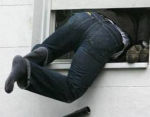

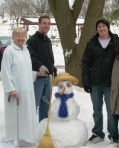
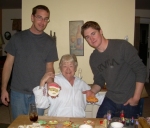


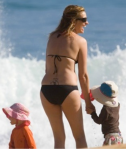


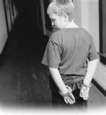







More than Eight Things You Should Never say to a Mom
Posted by: meanmompres on: April 18, 2012
An interesting article was recently written in support of moms,
advising others of how their comments might inadvertently sound negative and hurtful.
As a mom, I have been the recipient of some of the list of eight and appreciate the support of the author.
I’d also like to add a few of my own.
The article is called Eight Things You Should Never Say to a Mom,
By Charlene Prince Birkeland, Team Mom | Team Mom
http://shine.yahoo.com/team-mom/8-things-never-mom-161800431.html
Below is the list. Please read the article to review the author’s explanations of how these might be perceived as negative.
Thanks, this is my running away outfit.
No I’m not. I was reading in Cosmo that this is the latest “look”. It’s that smoky look that’s all the rage. Looks great, doesn’t it?
After having my second son people often asked if we were going to try for a girl. My response was “Why?”
After I bring mine to your house. We’ll be there Tues.
I’m not. It’s the lighting in here.
A friend of mine got this one from a neighbor. Her response; “I’m not pregnant, just fat.”
I am at work!
We don’t do stages in my house. We do “get through the days” here.
There are few things more irritating to a parent than hearing that someone’s dog or cat is their “baby”
So because my kids didn’t have special needs they pretty much raised themselves?
I read that people who read too much have no time to handle things.
What comments irritate you as a mom?